Outsmarting Inflation - Tips and Tricks for Smarter Shopping

Miriam Weitz
November 17, 2024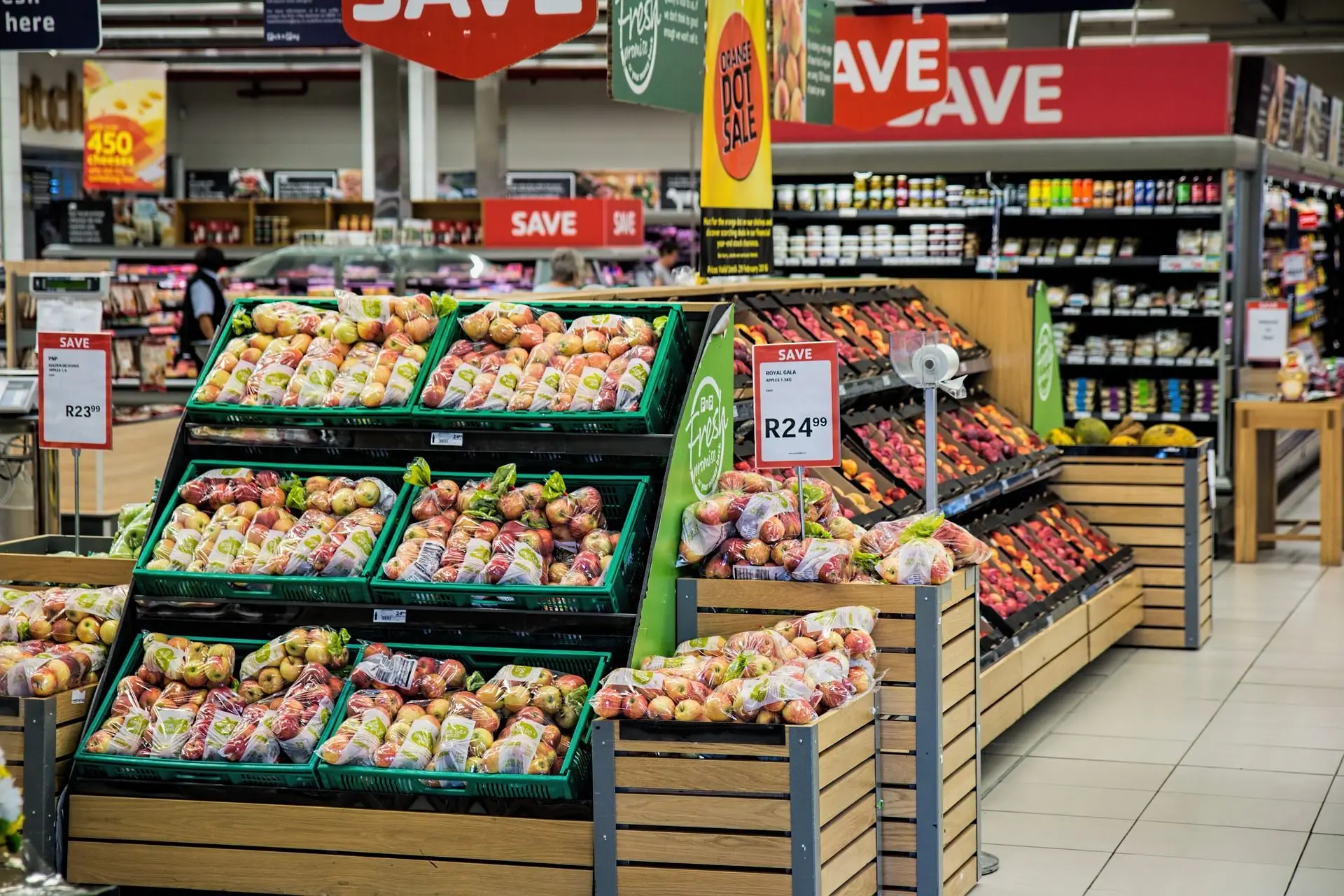
Good preparation is everything
Good planning is key, even when it comes to your weekly shopping. Before you even dive into the hustle and bustle of shopping, you should create a meal plan or - if that's too much effort - at least roughly consider what you want to cook for the current week. A useful tool for this can be the various flyers from discount stores and supermarkets that regularly land in your mailbox. For example, if I see something on special offer that we like, I will probably incorporate it into the weekly meal plan. Good planning of shopping also has another advantage. Usually, it means that less food ends up in the bin. I recently read that a family of four can save around 1,000 euros a year with well-planned shopping.
Stock up on food supplies
Das Thema Lebensmittelvorrat behandeln wir ja immer wieder im Blog von Speisekammer.App. Ein gut geplanter Lebensmittelvorrat kann nicht nur für unerwartete Situationen eine sinnvolle Reserve sein, sondern dein Vorrat kann dir helfen, bares Geld zu sparen. Dafür musst du übrigens nicht gleich zum Prepper mutieren. Du kannst beispielsweise durch den strategischen Einkauf von länger haltbaren Lebensmitteln wie Nudeln in größeren Mengen von Mengenrabatten profitieren. Gleichzeitig gehst du damit Preissteigerungen erstmal aus dem Weg. Dein Vorrat muss auch nicht in den Tiefen irgendwelcher Schränke oder Kühltruhen verschwinden, um dann irgendwann als abgelaufene Lebensmittelleiche wieder aufzutauchen. Dafür gibt es zum einen die Speisekammer.App und zum anderen solltest du deinen Vorrat immer aktiv in dein „Tagesgeschäft“ mit einbeziehen. Neigt sich beispielsweise eine Packung Nudeln dem Ende zu, dann kaufst du einfach eine neue. Du solltest immer darauf achten, die Lebensmittel aus deinem Vorrat als Erstes zu verbrauchen, bei denen der Ablauf des MHD droht. Darüber informiert dich dann unsere App.
Essential: the shopping list and a full stomach
This has happened to me more than once, and you've probably experienced it too: I go shopping with a growling stomach and end up being the proud owner of many food items that I don't actually need. By now, I've gotten into the habit of eating at least a little something before each shopping trip if I'm not full. The second tool to prevent me from going completely overboard while shopping (since I am admittedly a sucker for packaging) is a shopping list.
By the way, supermarkets and discount stores also use every trick in the book to tempt you into buying more than you actually need, for example with shopping carts. So, whenever possible, grab a smaller shopping cart or go shopping with a basket. A larger shopping cart often leads to buying more because 'the cart still looks so empty'.
If you're looking for more affordable groceries, it's worth checking the lower shelves as well. Expensive brand products are often displayed at eye level so that you'll reach for them more quickly. By the way: more expensive doesn't necessarily mean better.
The thing about bulk packages
Even though we at Speisekammer.App are big fans of stockpiling and the like, unfortunately, bulk packages are not always the cheaper alternative. Comparing base prices, meaning the price per 100 grams of a product, can definitely be worthwhile.
Conscious shopping can also help you save money. My weakness is, of course, besides the infamous cooking cream, chocolate. In the past, I often bought sweets, especially chocolate, just to have them at home. Nowadays, I try to limit this and if I can't resist at all, I only take one bar and not an entire selection.
Seasonal fruits and vegetables and cooking for oneself
Regional and seasonal fruits and vegetables can often be cheaper - and you can also cook something delicious from them. Tropical fruits, on the other hand, usually travel a long distance and often continue to ripen during transport. This doesn't mean that you should forever give up on pineapples, bananas, and the like, but it's the quantity that counts.
Another tip for saving money is to cook or make things yourself. Pre-cut salad or ready-made meals are of course convenient - but in the long run, they are more expensive than meals you prepare yourself.
Don't forget the deposit bottles
Another saving tip: Return empty deposit bottles. Depending on how much is consumed at your home, this can add up to a nice little sum. We don't take our deposit bottles and cans with us on every shopping trip, but only every second one. By doing this, we have indeed been able to save on our shopping expenses.
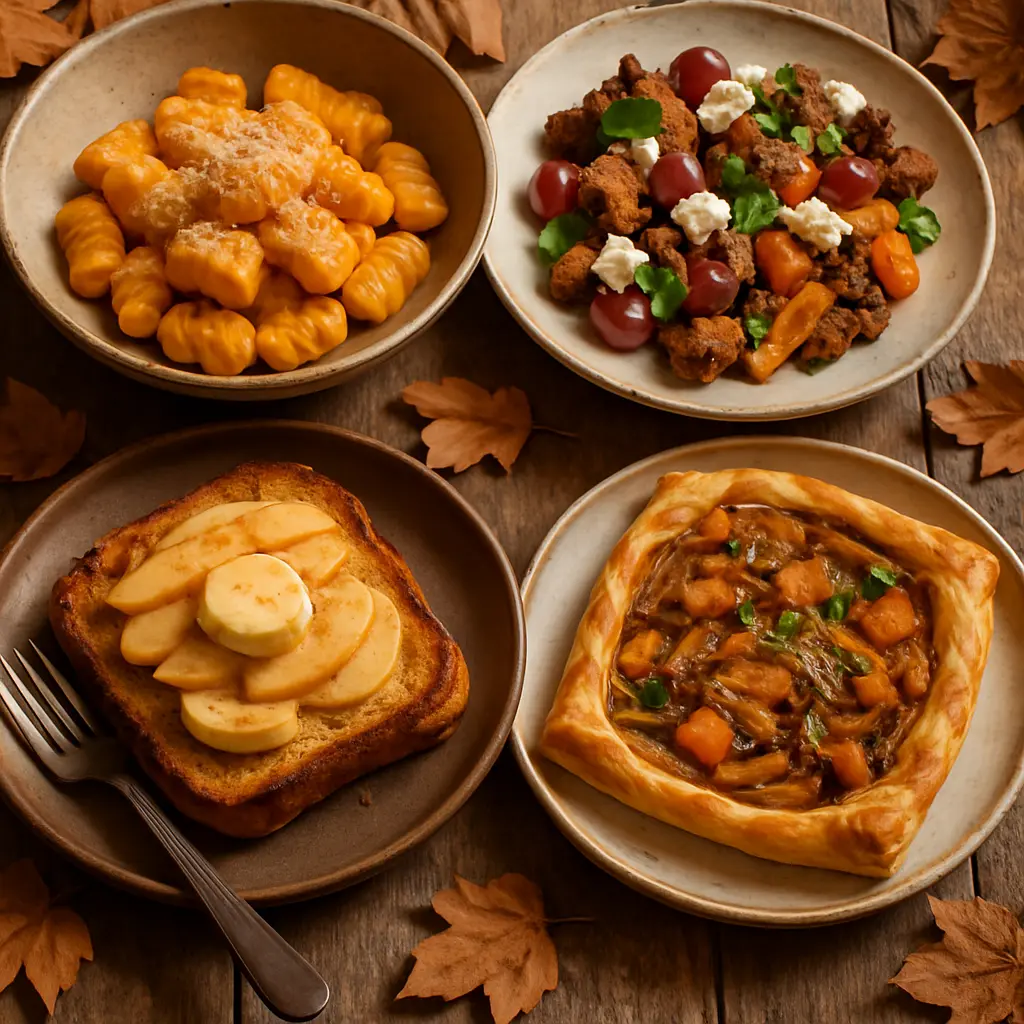
🍂 Cozy Autumn Leftover Cooking – Comfort dishes made from what's available
When the rain taps on the window and the tea cup becomes a permanent guest, the most beautiful kitchen time of the year begins: autumn. And what could be a better match than stylish leftover cooking – dishes that are not only sustainable but also truly exciting.
Autumn leftover cooking means: use instead of waste, but with a touch of sophistication. Here are some more unusual ideas to turn leftovers into small culinary highlights.
🧀 1. Pumpkin Gnocchi from leftover roasted vegetables
Do you have some leftover roasted pumpkin or sweet potato from the day before? Perfect!
Mash the vegetables, mix them with some flour, salt, and grated Parmesan, shape them into small gnocchi, and briefly cook them in salted water until they float to the surface. Then toss them in sage butter and top with chopped walnuts.
→ Tastes like Italy, looks like fine dining – and it's all made from leftovers!
🥖 2. Rustic bread salad with grapes and goat cheese
Tear stale bread into pieces, toast in olive oil until golden brown.
Add a few grapes (wrinkled ones are especially sweet), arugula or lamb's lettuce, crumbled goat cheese, and roasted hazelnuts. Mix with a dressing of balsamic vinegar, honey, and mustard.
→ A fall twist on the classic Panzanella – sweet, salty, crunchy, perfect!
🧅 3. French onion tart with leftover vegetables and puff pastry
Got some leftover puff pastry in the fridge? Make a tart out of it!
Caramelize onions in butter, add some leftover vegetables (e.g., leeks, mushrooms, or spinach). Spread on the pastry, top with a dollop of sour cream or cream cheese, and bake until golden brown.
→ Wonderfully aromatic, especially with thyme or rosemary.
🍎 4. Apple Sourdough French Toast with Vanilla Rum Butter
A piece of stale sourdough bread is soaked in a mixture of milk, egg, vanilla, and a dash of rum, fried in a pan, and served with fried apple slices and a rum butter.
→ Luxurious, yet made entirely from leftovers – perfect for a Sunday breakfast in pajamas.
🥬 5. Risotto made from leftover vegetables with lemon and herb oil
Chop the vegetable scraps finely and cook with a handful of rice into a creamy risotto.
A dash of lemon juice and some leftover herbs (parsley, basil, arugula) blended with oil make a fresh herb oil as a topping.
→ The acidity of the lemon beautifully enhances the earthy autumnal notes.
☕️ Bonus Tip: Using leftovers in a dessert glass
A few spoons of leftover compote?
Some leftover cake or cookies?
Layer it all with yogurt or mascarpone in a glass – and you have an autumnal "trifle" that looks like it came straight from a café in Copenhagen.
🍁 Conclusion
Autumnal leftover cooking is not a last resort, but a playground for creativity. When you look at ingredients with open eyes – not as leftovers, but as opportunities – small, exquisite dishes full of soul and flavor emerge.
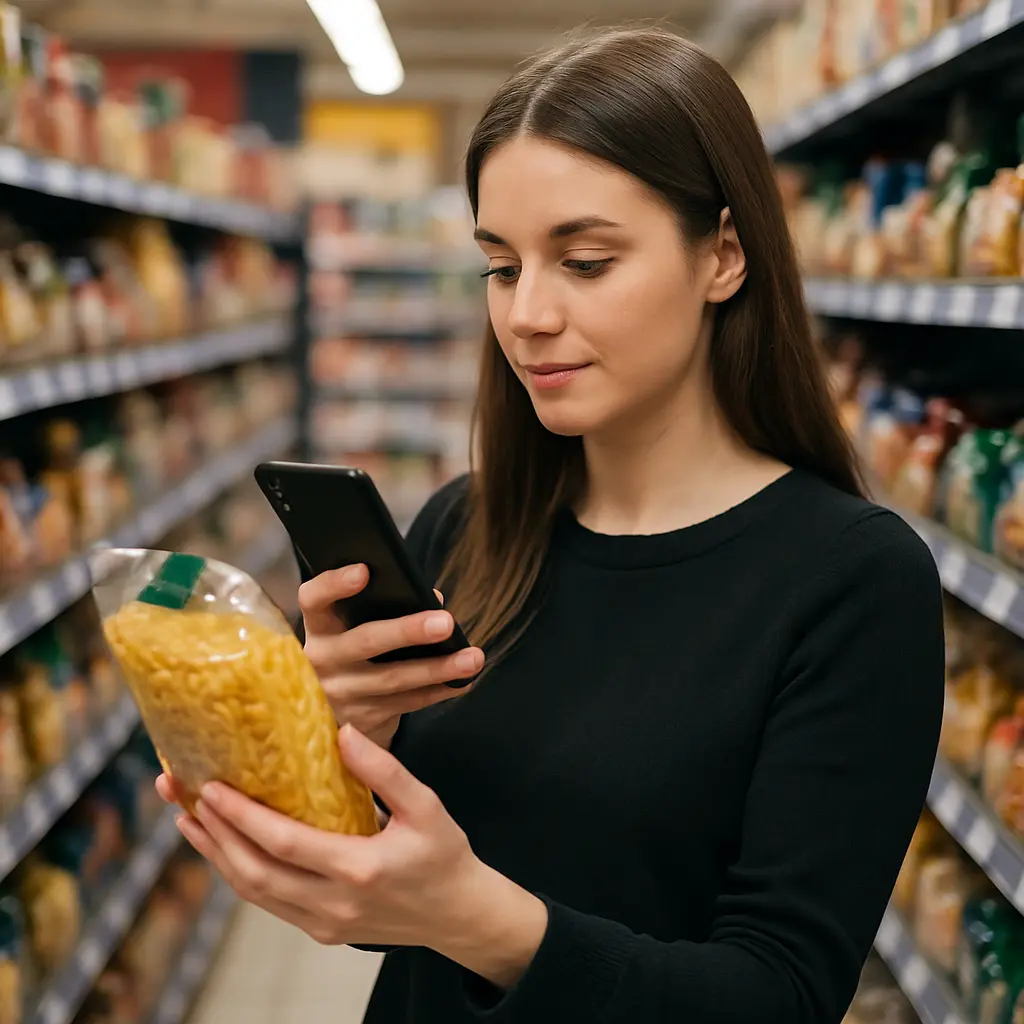
Why we never stop refining Smantry ✨
At Smantry, we don't believe in 'finished'.
An app that is meant to accompany people in their daily lives is never complete – it grows, changes, and evolves. Just like the people who use it. 💛
We regularly pay attention to every detail:
How does a click feel? Is the path to a function clear enough? Does the idea behind a new view come across intuitively?
Sometimes it's just tiny things that make the difference – a better-placed button, a simplified overview, or a sentence that suddenly becomes clearer.
What drives us is the idea that Smantry should feel easy, familiar, and meaningful.
We want you to open the app and feel: "Ah, this is exactly how it should work."
Of course, not everything always goes perfectly. But that's exactly the point: We take the time to listen, to observe, to reconsider. Every piece of feedback, every use case, every new idea helps us to understand a little better what really matters.
Smantry is not a rigid product for us – it's a living process. A collaborative project that grows step by step.
And every update, every small improvement is a sign that we are on the right track:
A path to an app that doesn't feel like technology, but like support.
Towards a daily life that becomes simpler. Towards clarity, structure – and maybe even a bit of ease. 🌿
We're staying on it.
Because we are convinced that good things take time – and that it's worth creating them with heart.
Your
Smantry-Team
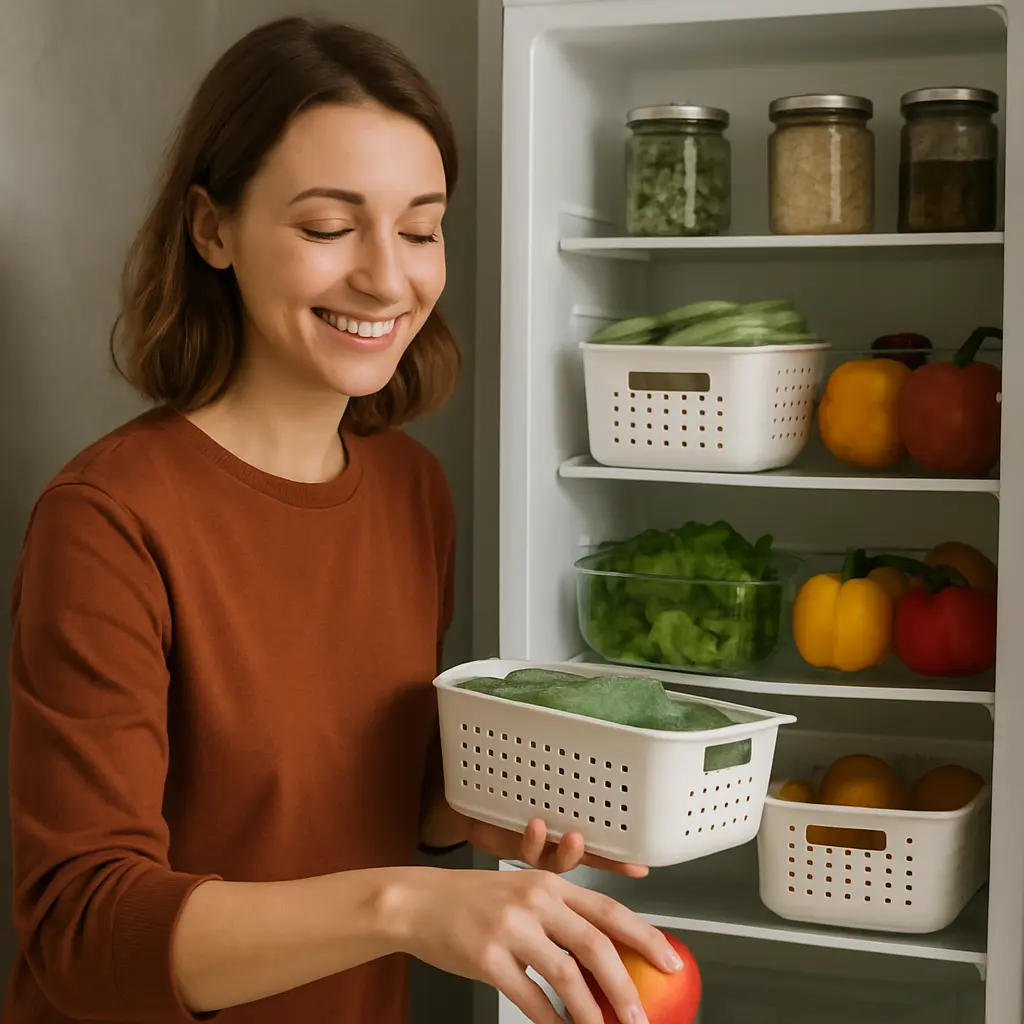
🌱 Staying on track made easy: How to stay motivated to create order and avoid food waste
We all know it: Initially, the motivation is high! You finally want to get your kitchen organized, keep an eye on your supplies, and shop more consciously. But after a few weeks, everyday life creeps back in – and the good resolutions start to falter.
With Smantry we want to support you not only in getting started, but also in sticking with it in the long term. 💪✨
1. Be aware of why you are doing this
Order and sustainability are not short-term trends – they grant you freedom, time, and a good feeling. If you know why you want to keep your supplies in check or throw away less food, it becomes much easier to stay consistent.
👉 Tip: Write down your 'why' in the app note or as a reminder.
2. Set small, achievable goals
Nobody becomes an organizing pro overnight. Start small:
- Today I'm just organizing the spice rack.
- Check the fridge this week.
- On your next shopping trip, purposefully buy only what you really need.
Small steps lead to success – and success motivates!
3. Make it easy for yourself – with smart helpers
Smantry automatically reminds you of expiring products, helps you keep track of your inventory, and assists you with shopping. This way, you have to think less and can enjoy more.
👉 The less effort required, the easier it is to stick with it!
4. Celebrate your progress 🎉
Creating order or avoiding waste is a process, not a sprint. Regularly review what you have already accomplished – you may already see that you need to throw away less or that your supply is finally manageable. That's great!
5. Make it part of your routine
Schedule fixed 'Smantry moments': for example, briefly check the inventory on Sundays or update the shopping list before going shopping. Routines provide structure and make sustainable actions a matter of course.
💚 Conclusion:
Motivation is not a perpetual flame – but with the right tools and habits, you can reignite it time and again.
With Smantry, you have a smart companion by your side that helps you stay organized, consume more consciously, and incidentally do something good for yourself and the environment.
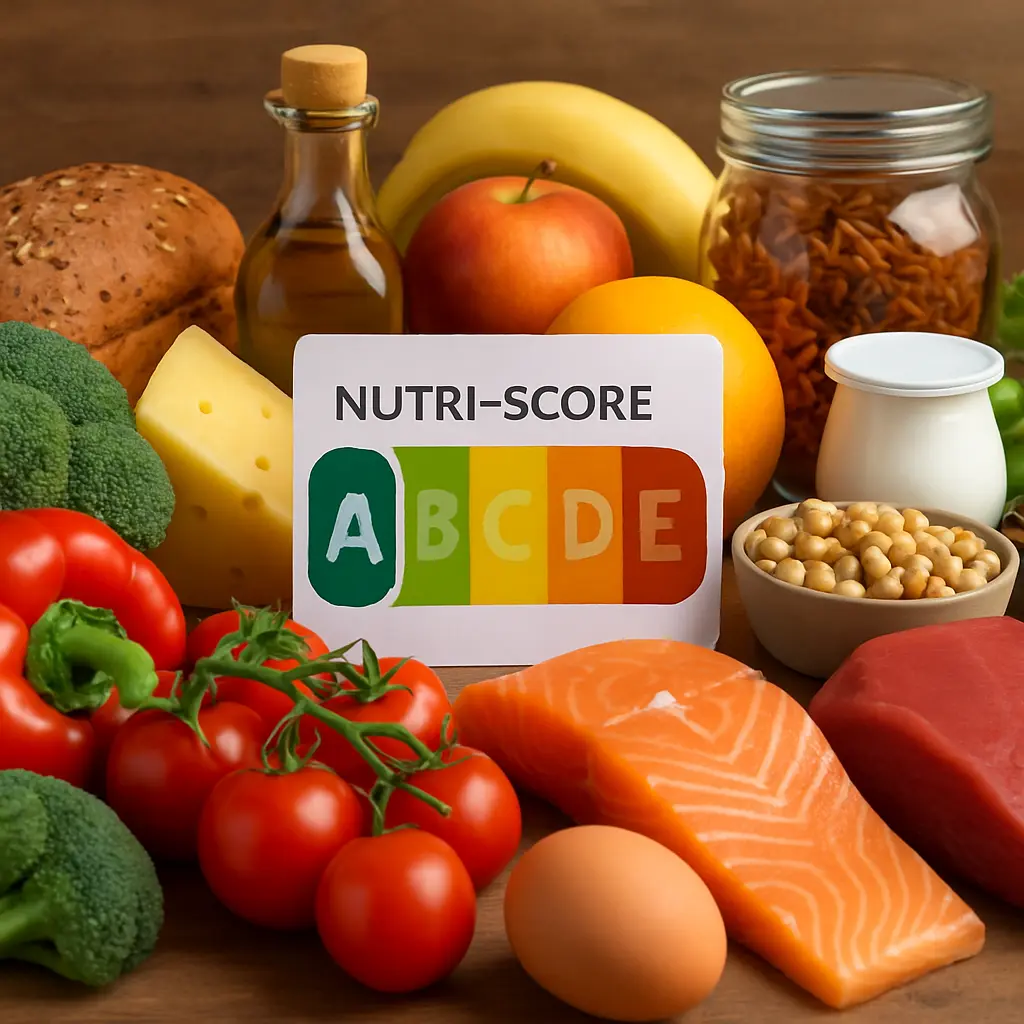
More clarity when shopping: How Open Food Facts and the Smantry app make nutrition transparent
Many foods look healthy at first glance – but what's really inside them? Are the nutritional values balanced? How processed is a product? And what impact does it have on our environment?
This is exactly where the Smantry-App comes in: It uses the globally open database Open Food Facts, to give you immediate clarity when scanning your items. But what's actually behind the colorful labels like Nutri-Score, NOVA or Eco-Score, that you encounter in the app?
Let's take a closer look at the background.
Open Food Facts: From the Idea to a Global Database
The journey began in 2012 with the founding of Open Food Facts – a non-profit organization that collects, analyzes, and makes food information freely accessible worldwide. The goal from the beginning was to provide consumers with scientifically substantiated information.
What started as a small project has now become a global platform with millions of products. And it is precisely this data that the Smantry-App uses to give you a clear overview directly on your smartphone.
An overview of the most important scores
1. Nutri-Score – how healthy is my product?
Since 2016, the Nutri-Score has been legally established in France – and it has quickly spread throughout Europe.
- A (green) means: very balanced.
- E (red) means: unbalanced, enjoy in moderation.
The rating is based on calories, sugar, salt, saturated fats – but also on positive factors such as fiber, protein, and the proportion of vegetables.
👉 So in the Smantry app, you can see at a glance whether a food item fits into your everyday life – or perhaps should be on the table less often.
2. NOVA-Score – how processed is it?
Not only the ingredients, but also the degree of processing plays a significant role for health. This is exactly what the NOVA-Score (integrated into Open Food Facts since 2018) shows you:
- 1 = unprocessed or minimally processed (e.g., fresh fruit, plain yogurt)
- 2 = ingredients such as vegetable oils, sugar, flour
- 3 = processed foods (e.g., bread, cheese, canned goods)
- 4 = highly processed products ("Ultra-Processed Food"), often with additives, flavors, and industrial processes
👉 With the Smantry app, you can instantly tell if a product is still 'close to nature' – or if it falls into the category of being highly processed.
3. Eco-Score (soon to be Green-Score) – how sustainable is my shopping?
Since 2019, Open Food Facts also includes an environmental assessment: the Eco-Score. It takes into account, among other things:
- CO₂ emissions from production and transportation,
- Packaging and recyclability,
- Origin and seasonal factors.
The rating is – similar to the Nutri-Score – from A (very eco-friendly) to E (less sustainable).
By 2025, this will become the Green-Score, which will take into account even more detailed data and thus provide you with even better guidance for sustainable consumption.
👉 For you in the Smantry app, this means: You can see not only whether a food is healthy for you, but also whether it is good for our planet.
What this means for you as a Smantry user
Currently, you can scan your products in the Smantry-App and view many details. The scores themselves are not yet integrated – but the integration is planned.
This means: Soon you will be able to see not only the nutritional values of a product but also how healthy, processed, or sustainable it is – all directly in your app.
Conclusion: Your Smart Nutrition Compass
The colorful labels are much more than pretty symbols. They are your quick compass in everyday life – whether you want to shop with health consciousness, reduce highly processed products, or pay attention to the environment.
With the Smantry-App you already have strong support for more transparency while shopping. And with the planned integration of the scores, it will become even more valuable – your smart nutritional compass for the future.
